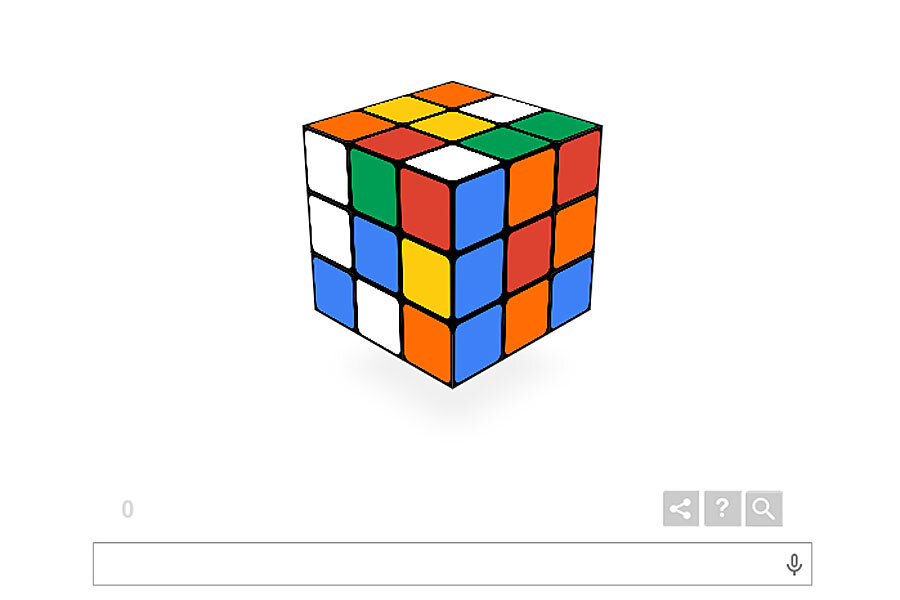How to solve Google's Rubik's Cube doodle
Loading...
“Rubik's Cube” and “frustration” are often words found in the same sentence.
The rainbow-colored geometric model invented by Hungarian sculptor Erno Rubik has reportedly teased one out of every eight people on the planet, and is one of the best-selling toys of all time. Now Google has brought the challenge online with a doodle that celebrates the Cube’s 519 quintillion permutations (on May 19 – get it?), as well as the 40th anniversary of the invention of the Cube.
“Released to the public in the 1980s, [the Rubik’s Cube] quickly became an international obsession, bigger than hairspray and breakdancing combined,” writes Richard The, a designer at Google and self-proclaimed child of the 1980s, on Google’s blog. “But the Rubik’s Cube is more than just a toy; it’s a puzzle waiting to be solved and a question waiting to be answered.”
All in all, there are more than 43 trillion ways to solve a Rubik’s Cube, though some methods are utilized more than others. Business Insider’s Sara Silverstein took on the challenge in a recent article, and found it is best to start by creating a “white cross” (a cross shape on one face using the white color), then solving the first layer, middle layer, top corners, then top layer edges (see her pattern examples here). RubiksCube.info’s Victor Ortega and Josef Jelinek lay out Ortega’s method, which recommends starting by orienting the top and bottom corners. For those interested in timed “speedcubing” (the current world record is 5.5 seconds), many swear by the Fridrich method, in which the cuber starts with any color cross then solves the first and second layer at the same time, therefore cutting down on the necessary turns.
Though the Google Doodle isn’t physical, Google provided some keyboard shortcuts that allow you to position the cube and squares in every necessary direction.
Still stumped? Google gets it. Mr. The says this was one of its most technically challenging doodles to create thus far, but also one that inspired extra spin-off applications that honor the cube beyond the puzzle.
You can find these at the Chrome Cube Lab, which houses applications designed specifically for the digital Rubik’s Cube. There is the 808Cube and SynthCube that let you remix beats and tunes played on different squares; the TypeCube, which lets you write a message that scrambles and solves itself when shared; and the ImageCube that scrambles your images or GIFs on the squares of a sharable cube.
Want to create more puzzles inspired by the Rubik’s Cube? Google also made the code of its cube open source, allowing anyone to create his or her own scrambled experiment. After all, an inquiring mind is exactly what Mr. Rubik hoped to inspire.
“If you’re curious you’ll find puzzles all around you,” he once said. “If you are determined, you will solve them.”








